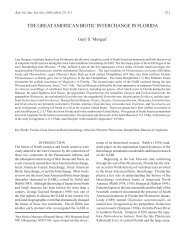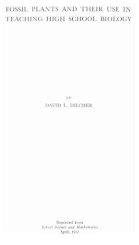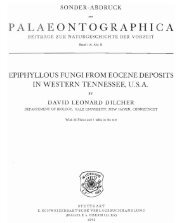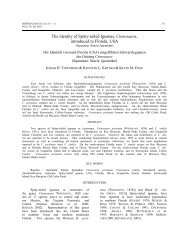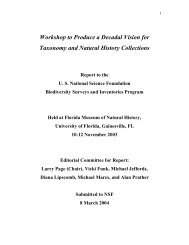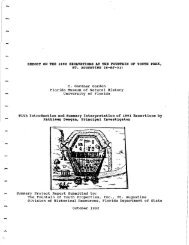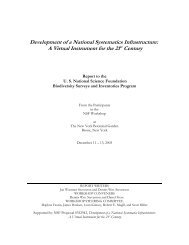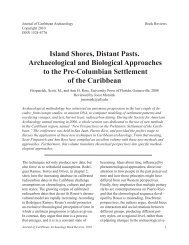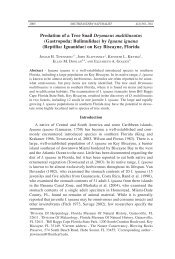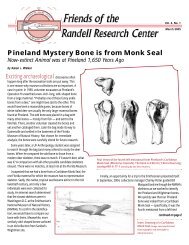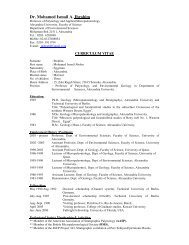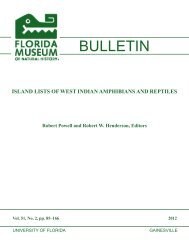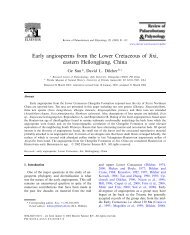COMPOSITIONAL ANALYSIS OF FRENCH COLONIAL CERAMICS ...
COMPOSITIONAL ANALYSIS OF FRENCH COLONIAL CERAMICS ...
COMPOSITIONAL ANALYSIS OF FRENCH COLONIAL CERAMICS ...
You also want an ePaper? Increase the reach of your titles
YUMPU automatically turns print PDFs into web optimized ePapers that Google loves.
Compositional Analysis of French Colonial Ceramics Kelly et al.<br />
Borgnesse, Morne Cabrit, Trois Ilets,<br />
Macabou, and Grande Pointe) belong to<br />
Group 2. Three of the six industrial ceramics<br />
recovered from Martinique belong to this<br />
group. Seven of the nine wheel-thrown<br />
utilitarian vessels recovered from Martinique<br />
belong to this group. In this group, five of the<br />
six ceramics that were hand-built were<br />
recovered from Martinique. Only one was<br />
recovered from Guadeloupe. Lastly, ceramics<br />
from plantation proveniences tend to have<br />
membership in compositional Group 1.<br />
INAA identified three compositional<br />
clusters interpreted to be chemically similar<br />
(n=39) and several outliers (n=2) and<br />
unassigned samples from presumably<br />
unknown provenances (n=9) (Table 2).<br />
Among the industrial ceramics and wheelthrown<br />
utilitarian wares the compositional<br />
groups correlate well with the island from<br />
which they were excavated. Among the handbuilt<br />
domestic ceramics one sample was<br />
assigned to Group 1 (Guadeloupe); six<br />
samples were assigned to Group 2 (five from<br />
Martinique and one from Guadeloupe); three<br />
samples were assigned to Group 3 (two from<br />
St. Martin and one from Guadeloupe); and<br />
two were left unassigned. This would seem to<br />
indicate a degree of trafficking in pottery<br />
between islands, or rather probably what was<br />
inside the pottery.<br />
Ceramic Petrography<br />
Temper-to-matrix ratios in the ceramic<br />
samples ranged from 1:3 to 1:7. The most<br />
Figure 9. Bivariate plot of base-10 logged lutetium and tantalum concentrations<br />
showing the chemical distinctiveness of the three compositional groups. Ellipses<br />
represent 90% confidence level for membership in the groups. Unclassified samples<br />
(+) are labeled.<br />
Journal of Caribbean Archaeology, Special Publication #2, 2008 99



